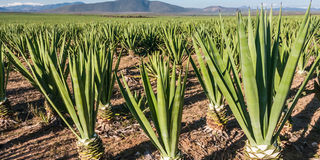New sisal farming strategy to focus on smallholders

What you need to know:
- The annual production of sisal, once a leading export crop, is currently estimated to be 39,484 tonnes because of low yields but the target is to raise production three folds to 120,000 tonnes
Same. A new sisal strategy is targeting small farmers in order to increase production of the export crop to 120,000 tonnes a year by 2025.
The production of sisal, once a leading export crop for Tanzania, is currently estimated to be 39,484 tonnes because of low yields.
To boost productivity, therefore, it is imperative to work closely with smallholders, the Tanzania Sisal Board’s (TSB) executive director, Saddy Kambona, told participants at a recent workshop here.
The seminar was convened to raise awareness about sisal cultivation in the semi-arid lowlands of the Kilimanjaro region. In addition to raising productivity, the strategy also includes attracting more farmers into the subsector.
TSB’s target is to add 60,000 smallholder farmers by 2025, 70 percent of whom will be young men and women. Already, 12,000 of them have been registered.
In Same district alone, the plan is to put at least 4,000 acres under sisal cultivation in order to attain the target.
Smallholders in 16 regions across the country, are expected to produce 60,257 tonnes, while the remainder of 60,000 tonnes will be grown in sisal plantations by the big farmers.
The drive to boost sisal production has roped in the Tanzania Agricultural Research Institute (TARI)’s Mlingano centre based in Tanga region.
Tari Mlingano director Dr Catherine Senkoro said sisal was an alternative cash crop for farmers in Same and Mwanga districts, which are prone to drought.
She said sisal was not only resistant to drought but could earn farmers handsomely as it fetches fairly high prices in the markets.
“Farmers can use such earnings to buy food,” she said.
Besides its extracted fibre, which is used to make a host of items, sisal also provides ingredients that are used in the pharmaceutical industry.
Dr Senkoro regretted low productivity, saying that smallholders produced less than a tonne (800 to 900 kilogrammes) per hectare.
With proper agronomic techniques, the same hectare can yield up to five tonnes of raw sisal.
Same district council chairman, Yusto Mapande, said the local authority has decided that sisal should be one of the “strategic crops” for the district.
The crop is increasingly popular with farmers in the semi-arid lowland areas of Same and the neighbouring districts.
He said the 4,000 ha set aside for cultivation of the crop will be subdivided into 158 blocks of 25 acres each.
They will be set aside for interested individuals or groups keen to invest in modern sisal farming.
“The subdivision of 4,000 ha is intended to reach out to the small farmers and encourage them to cultivate sisal,” he said.
Mr Mapande added that the district council will invest in developing sisal seedling nurseries in the area.




